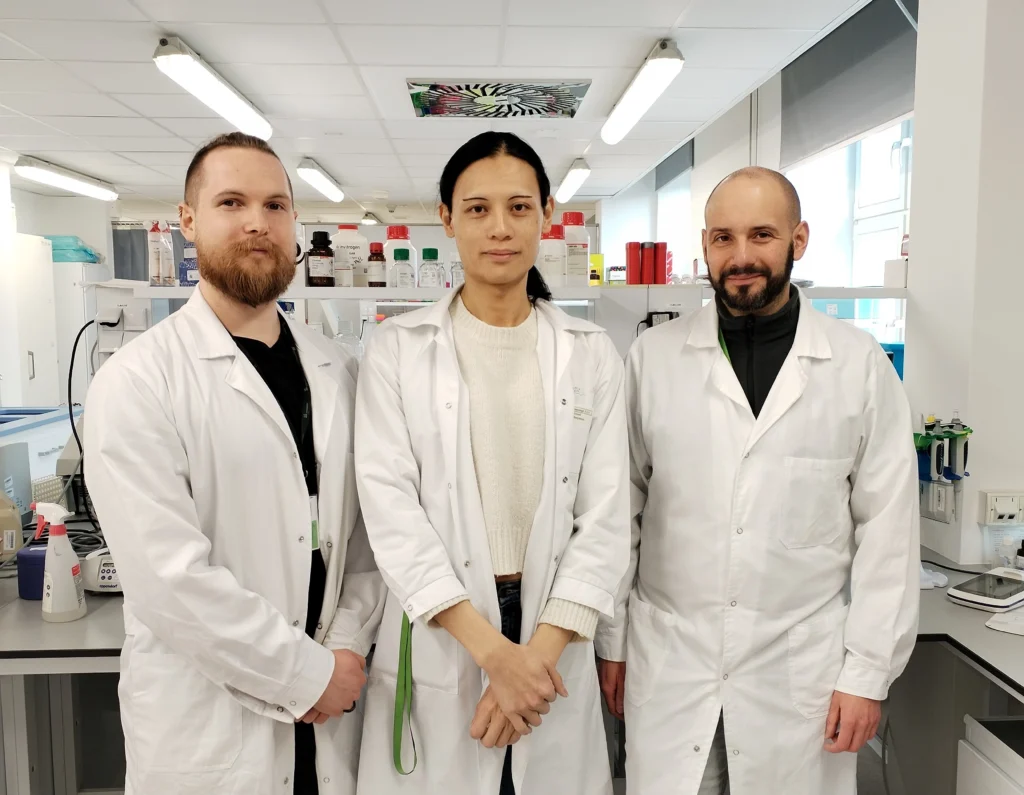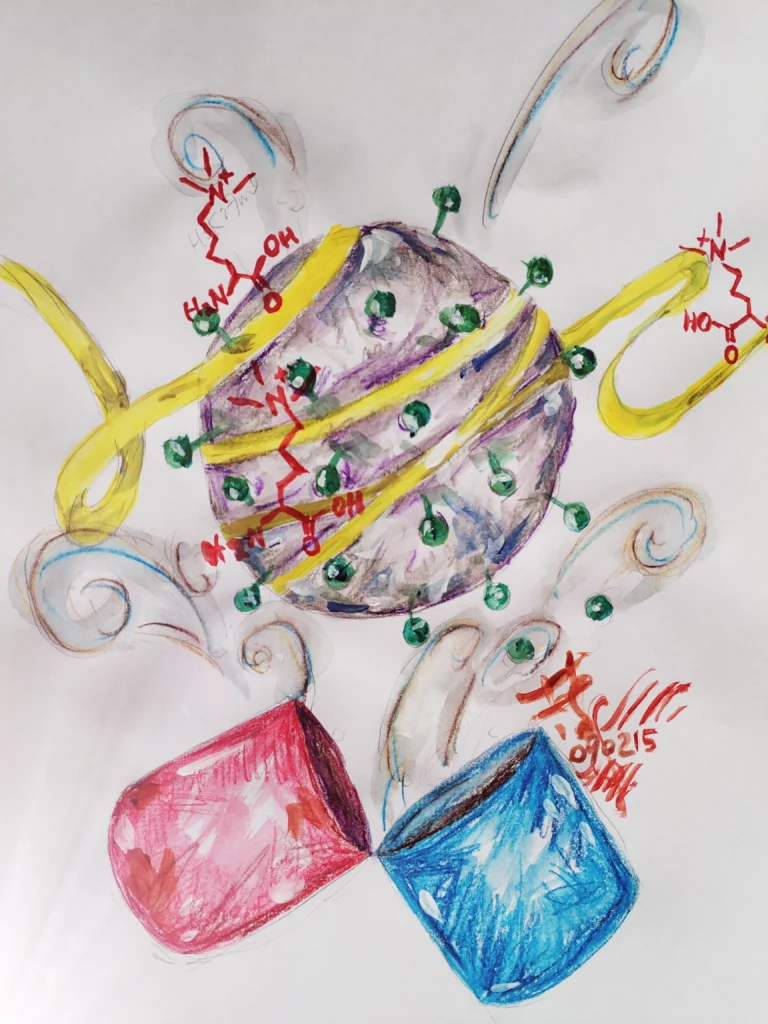Toward a functional cure for HIV infection
Dr. Heng-Chang Chen’s team from Łukasiewicz – Port, in collaboration with researchers from Jagiellonian University and Belgium’s KU Leuven, set out to find innovative strategies for a functional cure of HIV. The research received funding from the Weave-UNISONO program in the amount of 3.5 million PLN.
According to the World Health Organization, by the end of 2023 there were about 39.9 million people living with HIV worldwide, including about 1.4 million children aged 0-14. These numbers raise the question – why, despite advances in technology, medical developments, HIV remains invincible?
An enemy waiting in latency

After entering a cell, the virus’ genetic material (RNA) is reverse transcribed into viral DNA, which makes its way to the cell’s nucleus and integrates into the host genome. This virus becomes indistinguishable from our DNA and can replicate with our cells.
At that stage, a fraction of the viruses enter a silent infection mode called latency, rendering the virus invisible for the immune system.– What is most dangerous about this virus, and what makes it difficult to purge, is that awakening of proviruses from the latent state, so-called viral rebound, after the cessation of antiretroviral therapy – explains Dr. Heng-Chang Chen, leader of the Quantitative Virology Research Group at Łukasiewicz – PORT.
HIV on target
Dr. Chen gained experience as a molecular virologist at Humboldt University in Berlin, Dr. Filion’s lab at the Center for Genomic Regulation in Barcelona, Dr. Benkirane’s lab at the Institute of Human Genetics in Montpellier, among others.
Scientists seeking effective antiretroviral therapies to fight against HIV infection have already succeeded in slowing the progression of the disease or extending patients’ lives. However, these therapies are expensive, unavailable to all infected people and require antiretroviral drugs for the rest of their lives. It has not yet been possible to completely eliminate the virus from the infected body, but there is hope – Dr. Chen is working on an alternative solution.
HIV functional cures coupled with genome informatics in the imminent future?

At present, at least five different antiretroviral strategies are available to combat HIV, among them, the “shot-and-kill” strategy aims to first reactivate latent HIV and then using antiretroviral drugs or using the host’s immune system to eliminate HIV. Despite remarkable efforts, unfortunately, expectations for this shock-and-kill strategy have not been met yet. Such limited success of eradication strategies has caused scientists and clinicians to investigate alternative approaches, such as a functional cure the – “Block-and-lock” strategy aims to block the transcription of the provirus and permanently locking the reservoir in a deeply latent state – explains Dr. Chen – remarkably, we observed that different antiretroviral drugs target different subsets of proviruses. Since setting up the laboratory at Łukasiewicz – PORT one of my main research areas has been investigating the influence of the host genome on reshaping the microenvironment of the latent HIV reservoir (Chen Vaccines 2023; Więcek and Chen iScience 2023; Wiśniewski et al. iScience 2024). If we can understand their mechanistic interplay, we may be able to use knowledge of chromatin (e.g., chromatin silencing) to permanently block HIV transcription in deep latency.
Overall, the innovation in Dr. Chen’s research is primarily an approach to HIV at the therapeutic and functional genomic level. Locking HIV in its latent state would be a long-awaited breakthrough that would relieve patients of the need to take daily medications.
The goal is crucial
– If the whole genome could be seen as a part of the host’s big immune machinery, knowledge of the host functional genome property would be crucial to overcoming viral infections – says Dr. Chen. The Quantitative Virology Research Group hopes that understanding the role of the host genome in HIV latency will gain better therapeutic antiretroviral strategies and make it possible to eliminate HIV infection altogether in the future.
– In the work of a scientist, it is important to have a set goal – emphasizes Dr. Chen, for whom the priority of both his own and the entire team’s work is to improve the quality of life of HIV-infected people, to give them better control of the disease and access to more effective and less expensive therapies.
References:
- Chen, H.-C. 2023. The Dynamic Linkage between Provirus Integration Sites and the Host Functional Genome Property Alongside HIV-1 Infections Associated with Antiretroviral Therapy. Vaccines DOI:10.3390/vaccines11020402
- Więcek, K., andChen, H.-C. 2023. Understanding latent HIV-1 reservoirs through host genomics approaches. iScience DOI:10.1016/j.isci.2023.108342
- Wiśniewski, J., K. Więcek, H. Ali, K. Pyrc, A. Kula-Pãcurar, M. Wagner, H.-C. Chen. 2024. Distinguishable topological properties of functional genome networks in HIV-1 reservoirs. iScience DOI:10.1016/j.isci.2024.111222

